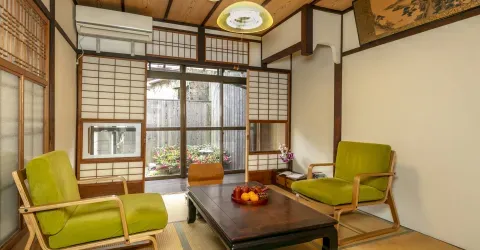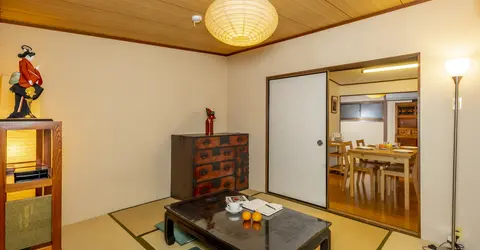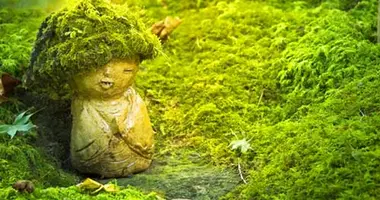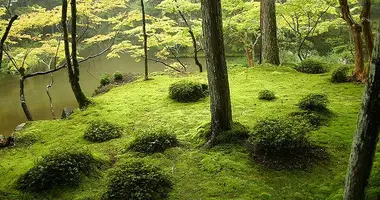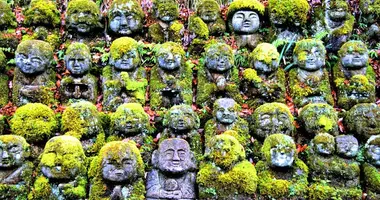Ginkakuji 銀閣寺
- Published on : 29/10/2014
- by : E.P.
- Youtube
<span>The temple is money!</span> <br>
With its harmonious landscapes and refined architecture, the beauty of Ginkakuji surpasses that of the Golden Pavilion in the hearts of many Japanese ...
The path flanked by two tall hedges of bamboo and camellias to enter the temple is like a last embrace before release into the open. This place is a fine example of geometry, harmony, and fairness. Hidden behind pine trees and shrubs but dazzled by the Ginsadan, the "silver sea" of white sand and gravel, Ginkakuji is modest and measured, but equally majestic.
A little later, a pond runs into the Ginsadan, while the wood panels of the villa meet the trees that protect it. The huge stones contrast with the infinitesimally small details. Each element based on its place in a perfect setting that only shouts and clicks of cameras disturb.
The missing
At the end of the fifteenth century, after ten years of conflict, Kyoto was devastated. The Onin War (1467-1477) has ruined entire neighborhoods, such as the north of the city. YOSHIMASA Ashikaga (1436-1490), the Shogun, decided in 1482 to build, away from the turmoil and uncertainty, a villa called Higashiyama-dono, the "Palace of the mountains of the East," which survived his death and many centuries. In the shadow of the golden Kinkakuji , the Golden Pavilion, YOSHIMASA decided to cover his house with a brilliant layer of silver, which then would lift Kyoto from its despair: two pavilions of precious metals to make a pair, gold in the north and silver in the east.
But the silver remained a legend; due to the death of the shogun in 1490, the villa never received this thin layer of silver. Shortly after, the place was transformed by the Rinzai Zen Buddhist school to a Temple, Jishôji.
To the east, another mountain
In the Higashiyama district, temples are kings. But alongside Honenin or Zenrinji , Ginkakuji remains the essential site.
The house consists of three parts: the Togudo, where a statue of the shogun resides, the Kannon Hall, where a gilded statue of Kannon, the goddess of compassion lies, and the main room, Hondo. The villa remains sober and visible, but the interior is not accessible, leaving only the paintings of BUSON Yosa (1717-1783) and TAIGA No Ike (1723-1776) visible, but the garden calls for a different kind of escape.
Having been surprised by the presence of Kôgetsudai, this mound of sand two meters high, which recalls Mount Fuji according to some legends, Ginkakuji invites visitors to climb higher to better see below. After the dry garden, a moss garden winds through the little hillsides for a quiet walk through the vegetation, shady, a haven of green. Down below, the temple stands out, a dominating presence.
A UNESCO World Heritage, this masterpiece of Kyoto knows only rarely quiet as there are many visitors. Arrive at the opening or better, just before closing for the most enjoyable visit to a beautiful city long since past.
Address, timetable & access
Address
Phone
+81 (0)75 771 5725Website
https://kyoto.travel/fr/shrine_temple/130








